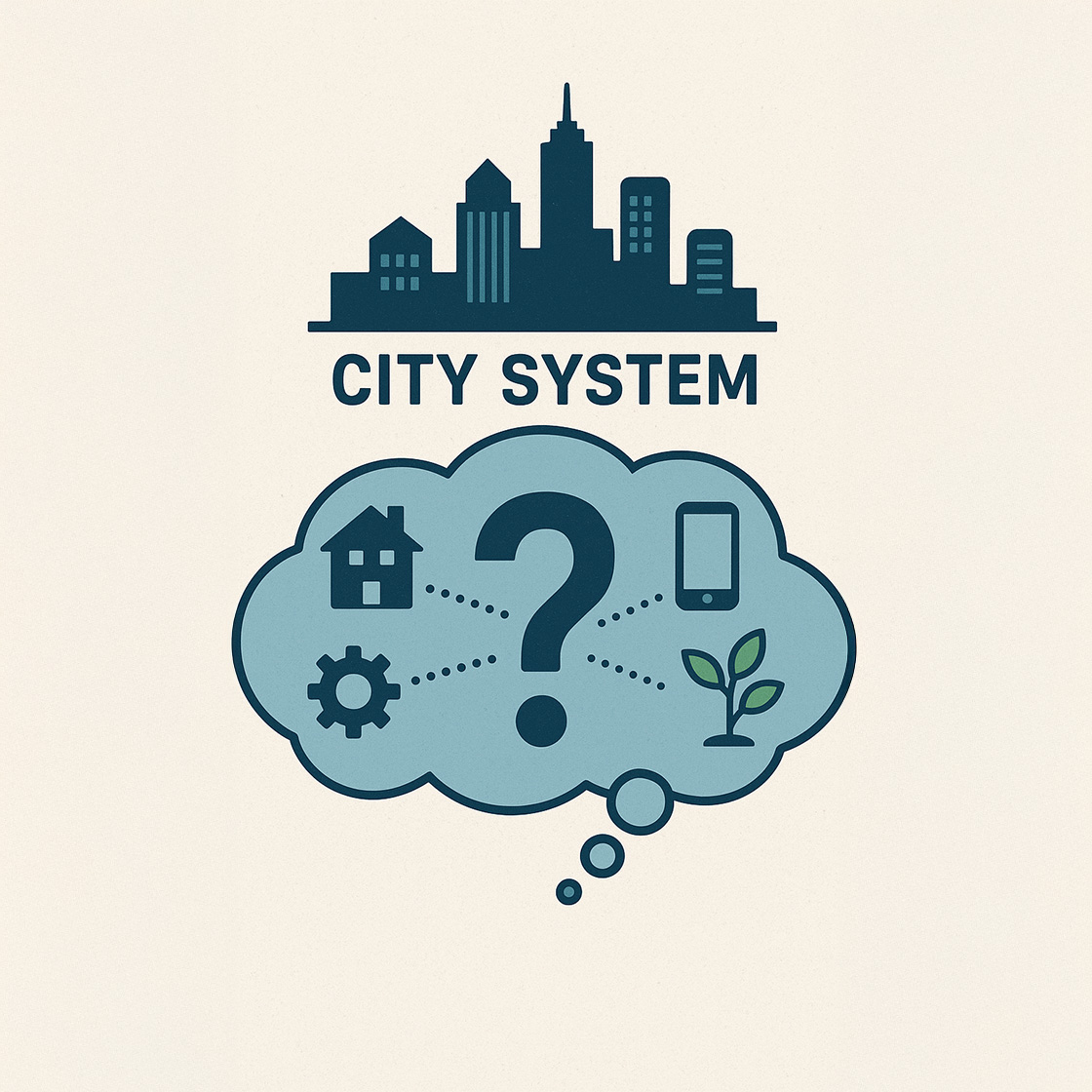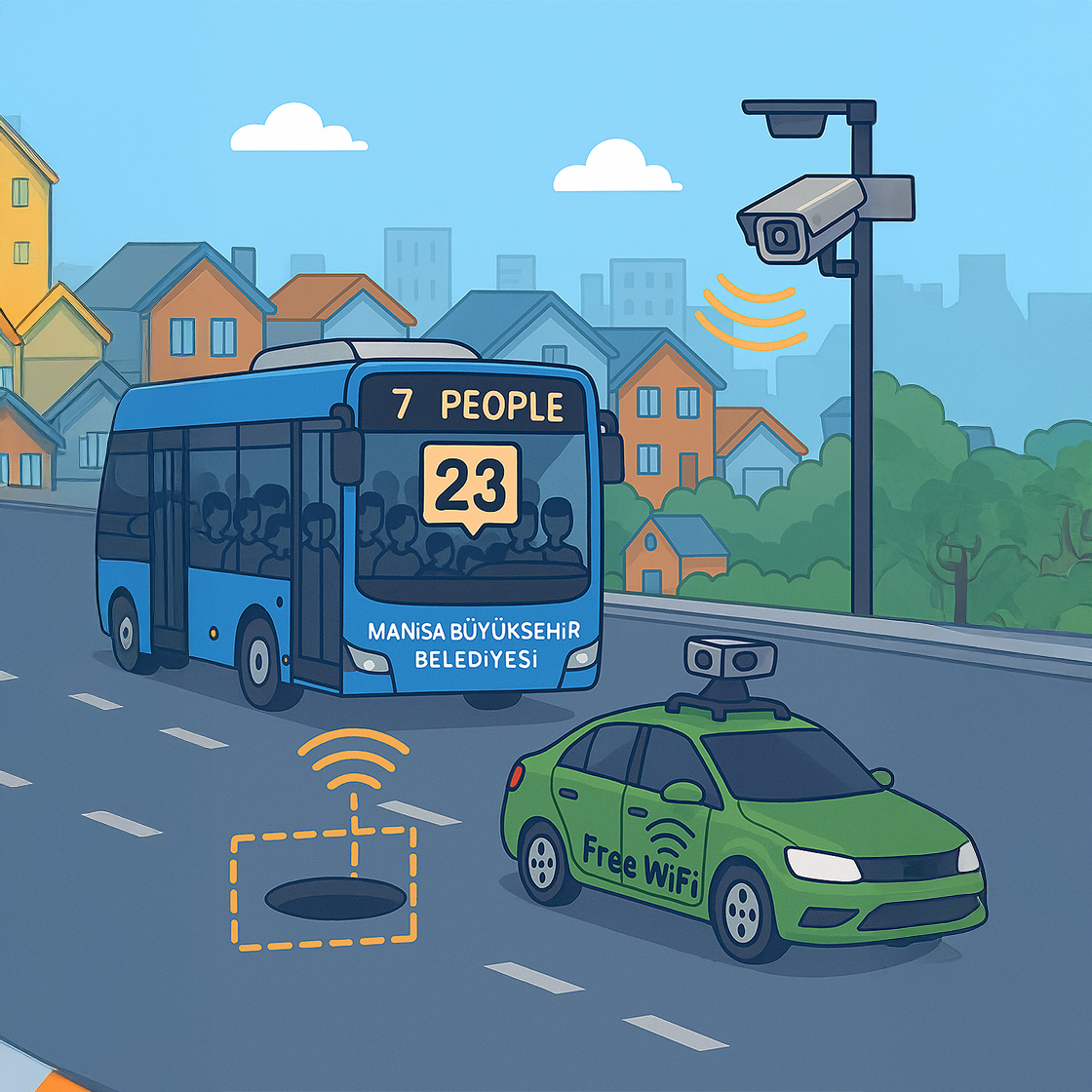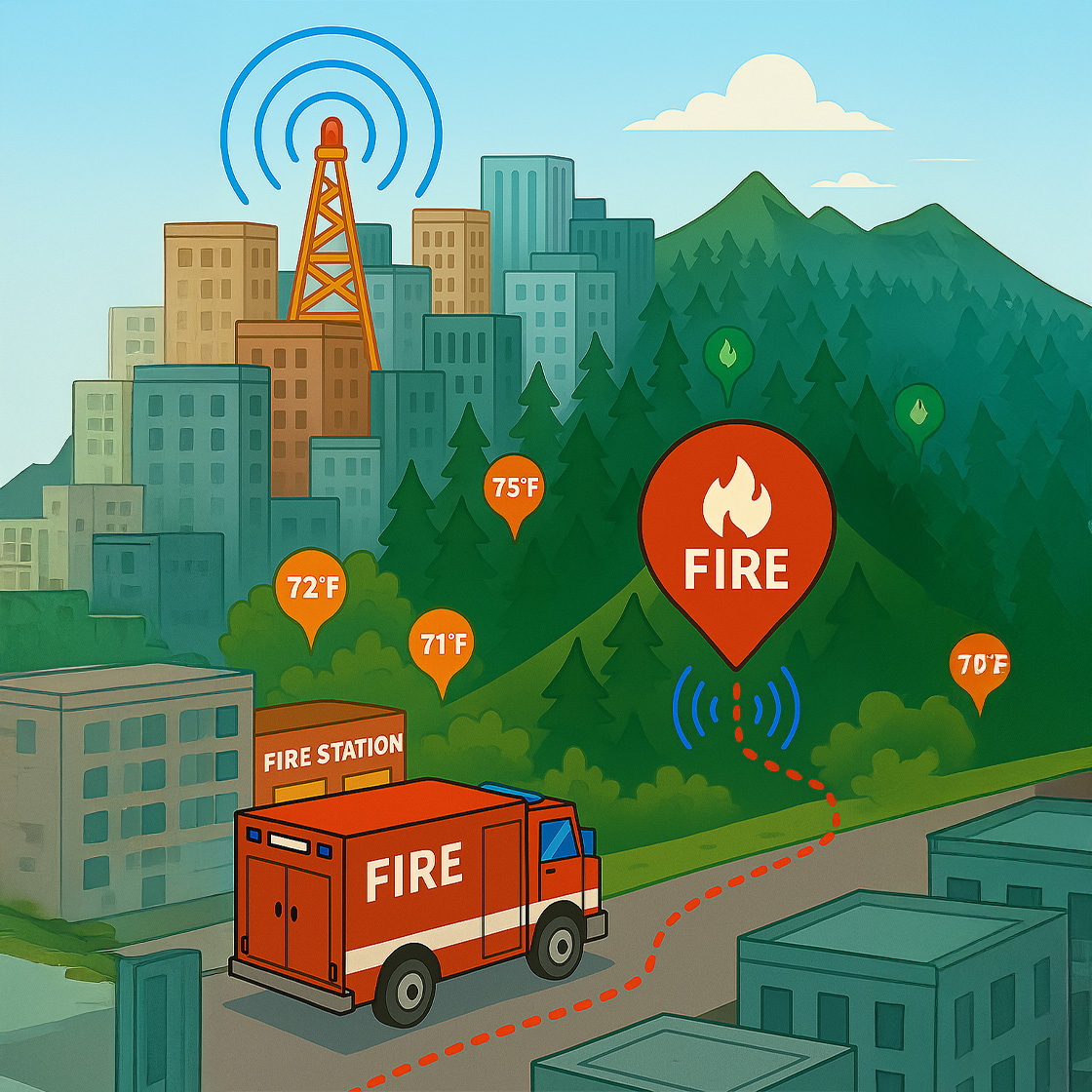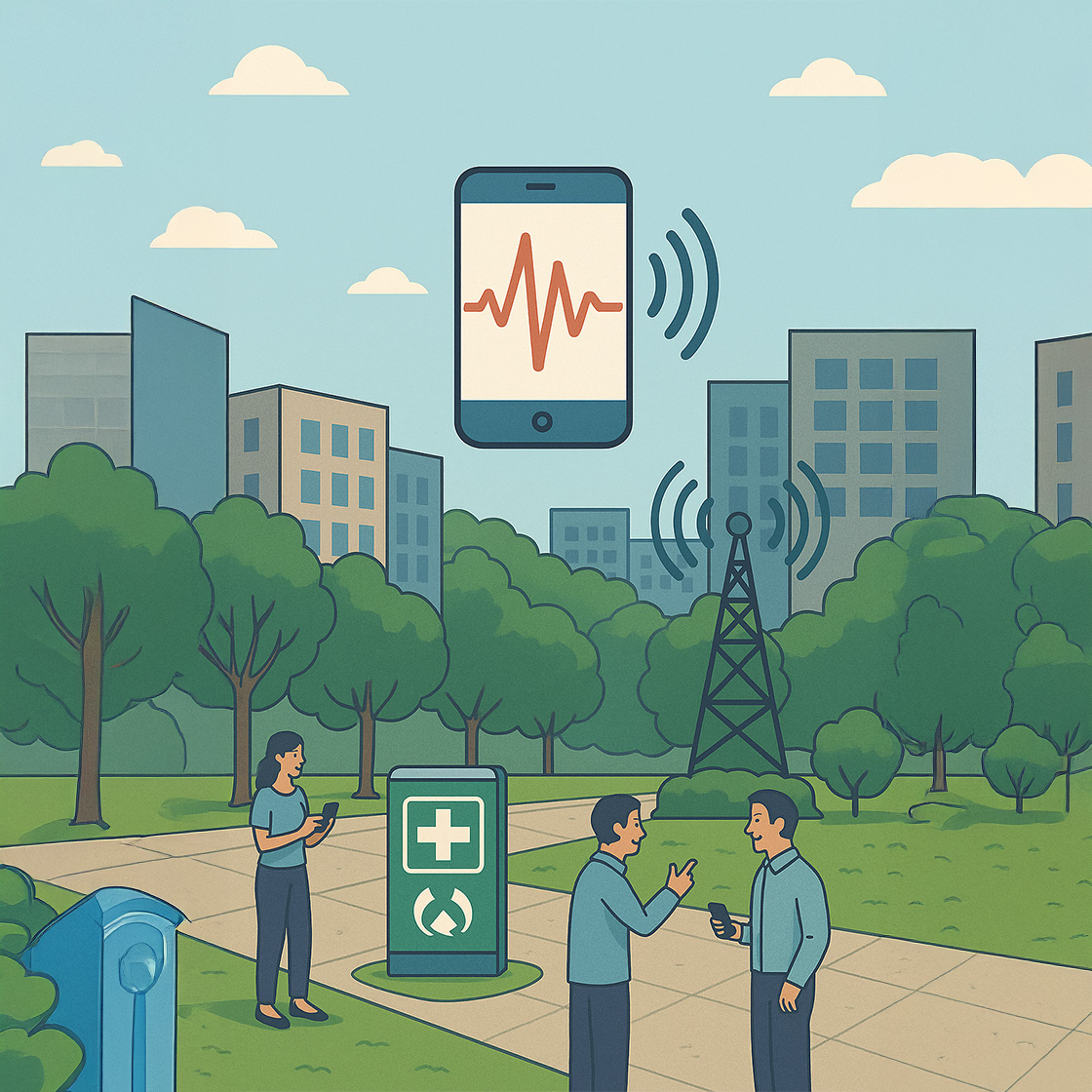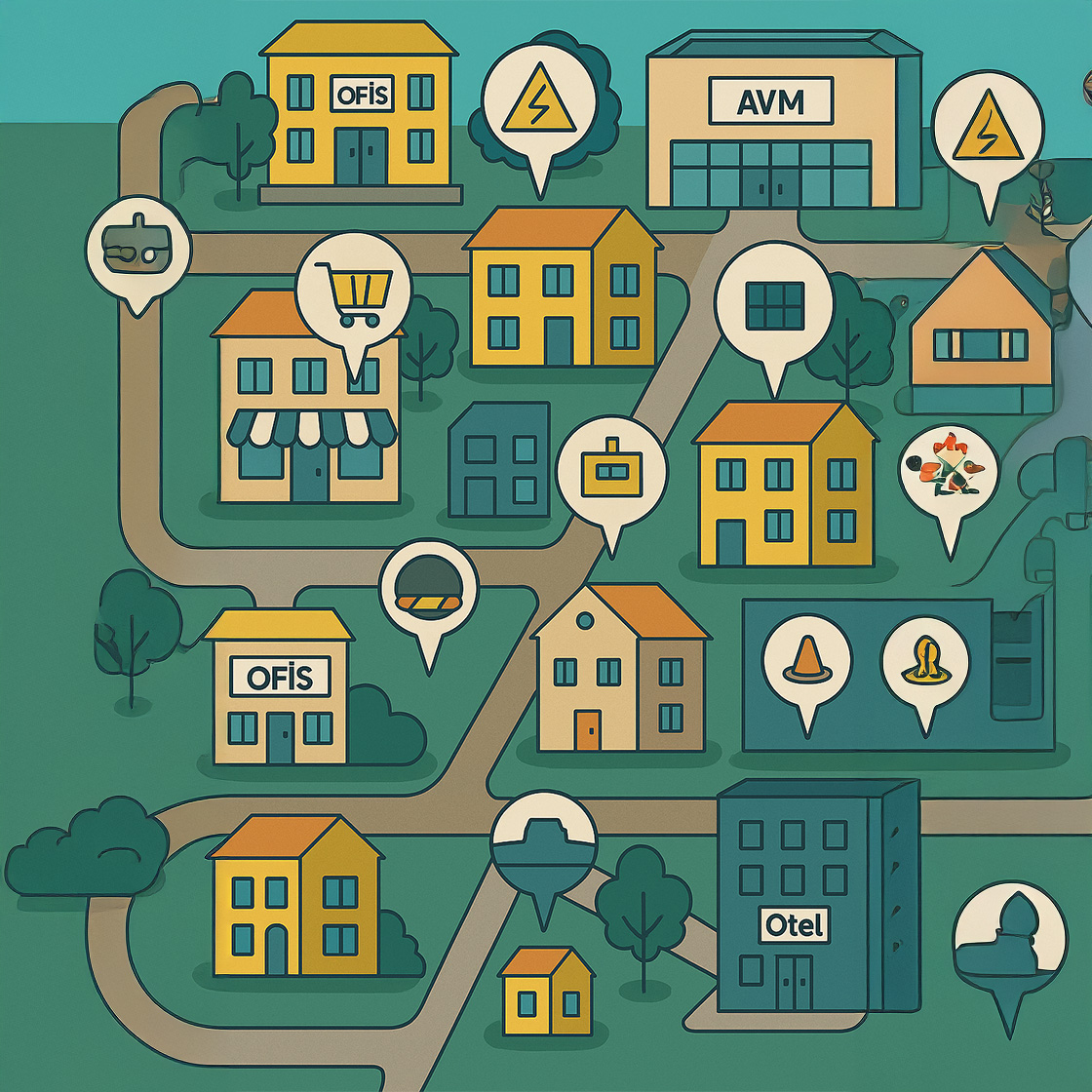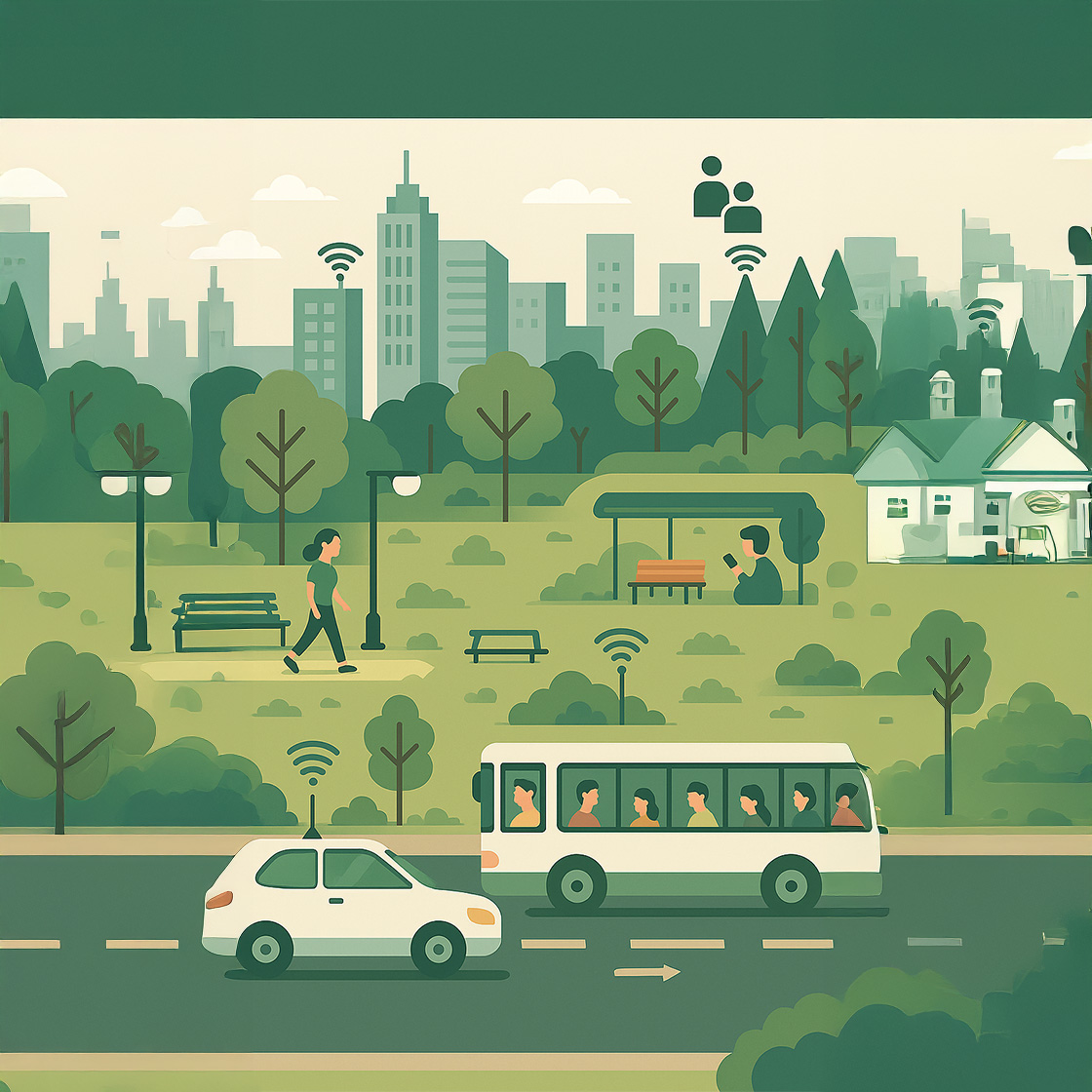DISCOVER
MANISA
One morning, a question echoed through the old stone streets of Manisa:
"Can this city be not only a home to the past, but also to the future?"
This ever-growing question became the harbinger of change for all the city's components. People did not want to be content with just preserving history. They dreamed of a safer, fairer, more efficient, and more "intelligent" city.
And this dream turned into an ecosystem.
An Ecosystem is Emerging
Technology Began to Speak with People
A New Agreement with Nature
A Shield Against Disasters
Accessibility for Everyone
A City for Everyone, Everyone's City
An Inspiring Model
The Silent Revolution of Manisa
Manisa, founded on the fertile lands of the Gediz Plain; with its vineyards, inns, mosques, and centuries-old culture, is one of Turkey's most established cities. Every street bears the footprints of history. But one morning, a question broke the silence in the municipality's meeting room:
"Do our citizens only expect roads, water, and pavements from us? Or are they now looking for something completely different?"
This question deeply affected the city's administrators. Because now, the streets spoke not only with garbage collection times, but with data. Young people wanted not only to spend time in parks, but also to access digital opportunities. Agriculture was shaped not only by soil, but also by satellites. Disasters were not only the result of nature, but also of unpreparedness.
Now, another language was needed for city management:
A city language that is data-driven, transparent, fast, environmentally friendly, and shaped together with its citizens.
A Bridge Between Tradition and the Future
This new vision aimed for a change that did not turn its back on Manisa's history; on the contrary, it was nourished by those roots. Innovative digital backbones began to be established among the city's ancient structures. This was not a 'project', but the birth of an ecosystem.
Just like the veins spreading from the trunk of a tree, technological transformation in Manisa started to spread;
From the municipality to the streets,
From agriculture to schools,
From transportation to disaster systems.
This did not happen all at once.
But it started with an idea.
And that idea was a question.
The Age of Hearing People's Voices
The first step of digital transformation was to truly listen to people. Although the question "What do you need in this city?" may seem ordinary on the surface, every answer became a brick that would shape Manisa's new architecture.
Students: "We want internet around the school."
Farmers: "If only there was a system to tell me when to irrigate my crops..."
Elderly: "We never know when the bus will arrive."
Youth: "I wish there was an app to see what's happening in my neighborhood..."
Municipalities: "The institutions doing excavation work don't communicate with each other."
Citizens: "Who will notify us in case of a disaster?"
From the combination of these voices, the first seed of the Manisa Smart City Ecosystem was planted.
The Journey of an Idea to Transformation
The journey that started that day began with an idea.
But that idea turned into a vision, then a system, and then an ecosystem.
This section is just a beginning in Manisa's story.
But it is the most important step that shapes the entire future.
Because a good city starts not with buildings, but with questions.
Systems can be built. But ecosystems live.
A system starts and ends.
But an ecosystem breathes, learns, develops, and grows within itself.
The idea of digitalization in Manisa was a vision; but to make this vision sustainable required a connected, living structure. For this reason, instead of producing independent projects, Manisa created an integrated city model in which every component communicates, supports, and works in integrity with each other:
The DNA of the Ecosystem
The smart city ecosystem of Manisa was built on four main "sources of life":
1. People - No technology can be meaningful without understanding people's needs. Manisa's ecosystem is nourished by a structure that listens to the individual's voice. Citizens are not only service recipients, but also active participants in the system.
2. Data - Information is now used not only for recording, but also for decision-making. The most fundamental resource that feeds every system: accurate, up-to-date, and processed data.
3. Technology - The invisible muscle that makes everything possible. Artificial intelligence, sensors, mobile applications, digital infrastructures... Here, technology is not a goal, but a tool.
4. Nature - The ecosystem is not just a digital concept; it is a structure that is compatible with the environment, sustainable, and energy-friendly. While planning for the future, Manisa also included nature in the equation.
Components Became Connected
These four main elements now come to life in projects, each of which has become a vein. However, these projects do not only fulfill their own functions, they also feed each other:
Pothole Tracking is not just road repair; it also provides data to the transportation system.
Manisanet is not just internet; it is a communication infrastructure in case of disaster.
AYBIS is not just a license; it is synchronization between municipalities.
Agricultural applications are not just support for producers; they are the digitalization of rural development.
Thanks to this structure, digital solutions in Manisa do not act as independent points, but as a woven network.
A City That is Alive, Developing, and Learning
Manisa is no longer just a city that is managed.
A system has been established that feeds itself, observes, analyzes, and makes suggestions.
This system:
- Processes the user's data anonymously, - Determines instant needs, - Offers suggestions to decision-makers, - Suggests its own solution when necessary (e.g. additional trips, automatic notifications, early warning).
Just like an ecosystem in nature, every intervention affects the whole structure. In Manisa, an investment made in one application directly contributes to other areas as well.
Not Just a Model, But an Infrastructure
The Manisa Smart City Ecosystem was not built just for today. This system;
- Is open to new technologies, - Has a layered data structure, - Was established in a modular and developable way.
This means:
- Today it works with road repair, - Tomorrow it can be integrated into the traffic control system. - The next day it can communicate with green area management. - In two years, an artificial intelligence can optimize the whole system.
This Was Just the Beginning
Manisa realized something:
Being a smart city is not about buying technology, but about keeping complementary components alive.
And this awareness formed the first ring of transformation in the city.
In the past, the city could not respond to people. Now it does.
In Manisa, technology is now at the very heart of daily life, not just in infrastructures. But the real difference lies in this technology becoming "talkative."
Systems that previously only worked with machines have now evolved to a level that talks to people, understands them, and even learns from them.
In this new era in Manisa; Buses talk, Parks call out, Fields send messages, Neighborhoods share data.
Waiting at the Bus Stop is Now Different
Aunt Ayşe comes to the stop every morning to take her grandchild to school. In the past, she never knew when the bus would arrive.
Now, by scanning the QR code, she can find out where the bus is in seconds via the mobile app.
The AI-supported traffic system understands congestion and suggests additional trips if necessary.
This is a silent but strong bond established with technology: Assurance.
A Farmer Who Talks to His Field
Uncle Mehmet grows grapes in the countryside of Manisa. But now, he acts not according to the calendar, but according to data from satellites.
Artificial intelligence measures humidity and gives early disease warnings.
The field tells its condition with sensors, and the farmer is not just planting and harvesting; he is managing data.
Moreover, he can sell his products on digital market platforms.
In Manisa, agriculture is now a science spoken with the land.
The City Reports Its Own Wounds
One morning, a small pothole formed on the road. In the past, it could have taken days to notice.
But now, the Pothole Tracking Vehicle passes through the street with a 360° camera, artificial intelligence detects the pothole, the photo drops into the system, and the repair process starts automatically.
Without any citizen having to complain anywhere, the city notices its own problems.
Now, there are no more "unseen problems" in the city.
City Guide in Your Pocket
A young student or a visitor from outside can see infrastructure works, pharmacy locations, power outages, and restaurants in their neighborhood thanks to the "What's in My Street" app.
This system not only provides convenience; it creates a new language of communication between citizens and the municipality.
- The name of this language: Transparency.
Digital Equality with Manisanet
A high school student wants to take an online exam at their village school. Thanks to Manisanet, this is possible with free and secure Wi-Fi access.
Being a smart city is not about buying technology, but about keeping complementary components alive.
The same network also works as crisis communication in disaster gathering areas, provides farmers with access to agricultural data, and offers social support services to the elderly.
Internet is no longer a luxury, but a basic municipal service.
The City is Not Just Smart, But an Understanding System
These projects point to an order where technology not only makes human life easier but also tries to understand it.
- Listens to needs, - Learns from behaviors, - Takes precautions, - Offers suggestions.
And this awareness formed the first ring of transformation in the city.
A City That Talks to Everyone
Manisa is no longer just a city that governs, but a city that lives in constant communication with its citizens.
- Not silent, but interactive. - Not restrictive, but inclusive. - Not individual, but collective.
"Now the city in Manisa is talking. More importantly: It is listening."
We wanted nature not to disappear as technology advanced.
The Manisa Smart City Ecosystem made a decision: Development should not exclude nature; it had to move forward together with it.
Because the soil is not just a production area; the forest is not just a green cover; the air is not just for breathing. All of these are a web of life.
With this understanding, Manisa made a new agreement with nature. The language of this agreement was technology, and its spirit was sustainability.
Forests Speak with Yeşil Çember
The forests of Manisa are no longer alone.
Low-energy sensors placed in mountainous and rural areas constantly monitor temperature, smoke, and humidity data.
The data is sent to an artificial intelligence-supported analysis system. When an unusual situation is detected, the system immediately gives a fire warning.
Thanks to this: Fires are detected before they grow, Response time is shortened, People, agriculture, and natural life are protected. Forests are no longer just silent; they warn.
Reconnecting with the Soil through Artificial Intelligence
Manisa's fertile agricultural lands are now not only the working field of tractors; but also of sensors, satellites, and algorithms.
- Artificial intelligence-supported agricultural systems:- Send messages to the producer like "you should irrigate now" or "there is a risk of disease",- Reduce input waste,- Increase productivity and income levels.
These applications make environmentally friendly agriculture possible. Because the right intervention at the right time protects both the soil and the farmer.
Managing Resources Without Waste
The Manisa Smart City Ecosystem is not only interested in building new things; it is also concerned with reducing waste.
- Thanks to digital infrastructure systems, municipalities prevent repeated excavations.- Water and energy consumption is monitored with sensors to ensure savings.- Devices powered by solar energy are brought to the forefront.
The ecosystem makes sustainability a part of daily operations.
Nature Protected by Data
In the past, environmental protection was done by inspection. Now it can be done remotely, with real-time data.
- Air quality measurement sensors,- Noise maps,- Green area temperature analysis systems are used by Manisa to protect nature with data.
Every piece of data becomes a new way to protect nature.
Silent Partnership
Manisa has established a partnership with nature. In this partnership, nature is silent; but the systems speak on its behalf.
This agreement:
Shows itself in sensors that give early warning of fires,algorithms that carry agriculture to the future,and infrastructures that provide water and energy savings.
"Manisa uses more than just the human eye to protect nature: Data, empathy, and technology."
When disaster strikes, not being late is more valuable than anything.
Throughout history, Manisa has hosted many civilizations. Life in these lands was sometimes abundant, sometimes challenging. Earthquakes, floods, fires...
Nature has tested this city from time to time.
But now, Manisa is not only carrying the traces of the past; it is becoming a city that foresees and prevents the risks of the future.
Because the Manisa Smart City Ecosystem has built a structure that is not waiting for disasters, but is prepared for them. And this structure aims to protect human life with the intelligence of technology.
A System That Warns Before the Earthquake
Accelerometer stations placed at 16 different points in Manisa monitor even the smallest tremors in the ground 24/7. This system:
- Instantly detects the epicenter and magnitude of the earthquake,- Sends early warning notifications to citizens via mobile app and screens,- Automatically shares location during a disaster.
Getting the news 5 seconds early is enough to evacuate a school. This system is a lifesaver that races against time.
Uninterrupted Communication: No Silence in Disaster
One of the biggest problems during a disaster is communication interruption. Manisa counters this by:
- Keeping crisis communication open through the Manisanet network.- 64 different disaster gathering areas are integrated with this network.- Citizens can send signals to each other, the municipality, and teams.
This system does not break the connection even in the darkest moment.
Pre-Planned Infrastructure and Intervention Routes
- Which areas will have excavation, maintenance, or repair is known in advance. - Routes for intervention vehicles are defined. - Inter-institutional coordination is carried out through the system.
Thus, the question of "who will go where after the earthquake?" is answered in advance.
Digital Eyes Against Fires
Yeşil Çember sensors in forested areas and rural villages protect not only nature but also people. When high temperature, humidity drop, or smoke is detected:
- Instant warning is given, - Opportunity for intervention before the fire, - The risk of loss of life and property is minimized.
This system fights not only fire but also negligence.
The Power of Integration: Every System Feeds Each Other
Disaster systems do not work alone. All smart modules in Manisa are integrated with each other:
Disaster warning → information to public transport system → passenger evacuationEarthquake → sensor → notification → gathering area guidanceFire → Yeşil Çember → fire brigade system → map integration
Every piece of data creates a new reflex. Every reflex can save a life.
A Strong Shield, A Silent Hero
This disaster ecosystem established in Manisa:
Constantly monitors, Learns, Reports, Accelerates intervention.
But perhaps most importantly, it carries a city understanding that prioritizes people into the future.
"You can't stop a disaster, but you can save lives by making your cities smart against it."
A city is not a place drawn on maps; it is a place lived together.
Manisa did not see transportation merely as a way to get from one place to another.
Transportation meant access to information, services, safety, and life itself.
That's why, in the Manisa Smart City Ecosystem, the transportation system was designed to be smart, accessible, and inclusive.
Buses Meet QR
In the past, people could not know if the bus had passed before they arrived at the stop. But now, every stop in Manisa has turned into an information center.
- Citizens can instantly see which bus will arrive at the stop and when by scanning the QR codes at the stop. - Thanks to the mobile app; route, density, and arrival time information is in your pocket. - The app is both in Turkish and easy to understand, so the elderly and children can use it too.
Access to information is the prerequisite for movement. Manisa offers this to everyone.
Dynamic Planning with Artificial Intelligence
Now, artificial intelligence is behind the public transportation system in Manisa. This system:
- On which lines has density increased?- Where do passengers wait for a long time?- At what times are extra trips needed?
Automatically answers these questions. Artificial intelligence processes daily data, analyzes it, and even offers suggestions. Decision-makers organize more planned and efficient trips based on these analyses.
In the past, it was "solve the problem when it occurs." Now, it is the era of "detect the problem before it occurs."
Not Just Passengers, but Users: Accessibility for Everyone
Transportation applications in Manisa are not only for young and digitally literate individuals.
- Audio notification support for the visually impaired
- Large font interfaces for the elderly - Suitable vehicle routes for the physically disabled - Low-data-usage applications for those living in villages and rural areasThis approach makes Manisa not just a city that provides transportation, but one that makes it accessible.
The city should be equally accessible to everyone. Manisa achieves this balance with data.
Transportation is Not Just Carrying: Integrated System
Transportation systems in Manisa work integrated with other smart modules:
- Information flow to the public transportation system during disasters: guidance and safe evacuation - The Pothole Tracking system instantly reports possible obstacles on transportation lines - Special public transportation solutions are developed for farmers between agricultural areas and the city center
Transportation in Manisa is no longer just a physical service; it is a data-driven, digital experience.
The Power of Integration: Every System Feeds Each Other
Disaster systems do not work alone. All smart modules in Manisa are integrated with each other:
Disaster warning → information to public transport system → passenger evacuationEarthquake → sensor → notification → gathering area guidanceFire → Yeşil Çember → fire brigade system → map integration
Every piece of data creates a new reflex. Every reflex can save a life.
A City That Opens the Way
Manisa has carried the smart city approach to its roads. And on this road, no one was left behind.
Because in this city:- Access to information is everyone's right,- Freedom of movement is everyone's expectation,- Technology is the tool that fulfills this expectation.
"In Manisa, roads are not just asphalt; they are digital bridges to equality."
A city is not a place drawn on maps; it is a place lived together.
At the heart of the smart city ecosystem in Manisa lies an understanding: This city will not only be managed, but shaped together.
No matter how powerful technology is, if it does not touch anyone, if it only appeals to a certain group, it cannot truly be called smart.
That is why Manisa is rebuilding city management not only with systems, but also with the voice, ideas, and participation of people.
Everyone Has a Say
In Manisa, citizens are not only recipients of services, but also architects of those services.
- With survey and feedback modules in mobile applications,
- With guidance and comment systems on digital boards, - Through neighborhood applications, citizens participate in decision-making processes.Now, the answer to the question "Where is the problem?" is not given by managers, but by citizens. Because the best data is the observation of the person living in the field.
Digital Access: Inclusion for Everyone
Manisa is not only a city that produces technology, but also provides access to technology.
- Free, secure internet in 17 districts with Manisanet- Digital opportunities for students around schools- Digital agricultural tools for producers in villages- Digital literacy support for disadvantaged groups
Digital equality is not just an ideal in Manisa, but a right that is put into practice.
Interfaces Compatible for Everyone
All digital solutions developed in Manisa:
- Are accessible for the disabled,
- Simple and understandable for the elderly, - Safe for children, - Have multilingual infrastructure for foreigners.Because digital transformation should be meaningful not just for one group, but for the whole society.
Screens in Manisa offer not only information but also equality.
Neighborhood-Based Participation Culture
The needs of each neighborhood and each region are different. Manisa sees these differences as a richness.
- Individual level notifications with the "What's in My Street" application - Neighborhood-based infrastructure works and planning - Participatory panels and digital meetings open to all segments of society
This city is managed not from the center, but from the heart of the neighborhoods.
Digital Solidarity Between Communities
There is an understanding in Manisa that started during the pandemic period but has now become systematic: Communities supporting each other.
Direct access from producer to consumer with digital market platformsIdentifying those in need with social support applicationsSupport for students and the elderly with volunteer digital networks
This is not only a technological ecosystem; it is also a platform for building social bonds.
A City Shaped Together
The Manisa Smart City Ecosystem has built a roof that includes everyone. Under this roof, there are individuals of different ages, from different regions, with different opportunities.
- But all can access the same applications,- Can offer ideas on the same platforms,- Freedom of movement is everyone's expectation,- Can be part of the solution in the same system.
"If a city listens to everyone, then everyone inevitably feels they belong to that city."
This is not only the story of Manisa, but also the story of the future.
The Manisa Smart City Ecosystem has turned into a story that started in one city and crossed borders. Now, this system does not only belong to Manisa; it is a model that other cities, regions, and countries can be inspired by.
Because Manisa did something: It did not just buy technology, did not just collect data, did not just provide services. It combined all of these in a human-centered order.
A Structure Extending from Local to Global
The transformation in Manisa,
- Was shaped by the power of local government, - Expanded with regional inclusiveness, - Aligned with global standards.
Today, the Manisa Smart City Ecosystem: - Overlaps with the UN's Sustainable Development Goals, - Meets European standards for data security and transparency, - Is cited as an example in rural development, disaster management, and participatory urbanism.
In other words, the route drawn by Manisa points to more than just a city.
A Roadmap for Cities Ready for Transformation
Manisa's model shows not only how systems should be, but also the approach:
- 1. Vision First: A city that does not know what it wants to do cannot transform with any technology.- 2. Data-Driven Decision: Systems managed not by intuition, but by real-time data.- 3. Human-Centered Design: Infrastructure that invests not in technology, but in people.- 4. Ecosystem Logic: Every component supports each other; relationships are built, not just projects.- 5. Adaptability: Not fixed structures, but digital layers that can develop and grow.
Knowledge Gains Value When Shared
Manisa did not keep this model to itself.
- Experience sharing with national municipalities
- R&D collaborations with universities - Documents that shed light on others with open data policyManisa has started to be talked about not only as a city, but also as a digital city guide.
A Legacy for Future Generations
This ecosystem was not established just to meet today's needs. For children, young people, and future generations:
- Livable- Fair- Sustainable- Participatory
"Buildings age. Systems change. But a well-established understanding lives for generations."
Digital Solidarity Between Communities
There is an understanding in Manisa that started during the pandemic period but has now become systematic: Communities supporting each other.
- Direct access from producer to consumer with digital market platforms- Identifying those in need with social support applications- Support for students and the elderly with volunteer digital networks
This is not only a technological ecosystem; it is a platform for building social bonds.
FINAL WORD
The Manisa Smart City Ecosystem is the implementation of a vision.
This model:
- Makes sense of data,- Puts people at the center,- Respects nature,- Is ready for crises,- Makes transportation accessible for everyone,- Democratizes participation and- Continues to inspire.
"A city is not just a place, **it is a way of life." And Manisa has become one of the cities that carries this way of life from today to the future."
Applications and Projects

VR ARAÇ
Infrastructure and Road SafetyDetects damaged roads and infrastructure problems with 360° camera-equipped vehicles, analyzes them with artificial intelligence, and enables rapid intervention.

AYBIS
Inter-Institutional Coordination – PlanningCentrally plans infrastructure excavation and maintenance works; enables data sharing between municipalities and prevents unnecessary excavations.

SOKAĞIMDA NE VAR
Citizen Information – City GuidanceProvides instant notifications about infrastructure works, outages, and important points like pharmacies on the map; makes daily life easier.

ÜZÜM
Integrated Municipal ServicesProvides municipal services on a single platform; transactions are carried out digitally in a fast and accessible manner.

YEŞİL ÇEMBER
Forest Fires and Environmental SafetyMonitors temperature, humidity, and smoke data in forested and mountainous areas with low-energy sensors; detects fire risks early.

MANİSA İÇİN TARIM
Agriculture and Rural DevelopmentMonitors field conditions with sensors and remote sensing technology, provides recommendations to farmers for disease risks and productivity, and enables access to digital markets.

MANİSA İÇİN ACİL
Disaster ManagementInstantly detects earthquakes with 16 accelerometer stations, provides early warning notifications and location sharing, delivering life-saving information during disasters.

AFET İNTERNET
Crisis ManagementProvides internet connection and guidance in 64 gathering areas; supports the safe guidance of citizens during disasters.

GÜVENLİ PARK
Public Space Security – Quality of LifeSecurity is ensured in parks and social areas with AI-powered cameras; inappropriate behaviors are detected and teams are directed with instant notifications.

MANİSA İÇİN ULAŞIM & QR
Transportation and MobilityCitizens can instantly track bus times and locations with QR codes and a mobile app; density analysis is performed with artificial intelligence, and additional trip planning is supported.

YOLCU PLANLAMASI VE ANALİZİ
Mobility & Data AnalyticsAnalyzes bus density and automatically optimizes trip schedules.

MANISANET
Digital Access – Social InclusionProvides free internet to citizens in 17 districts; offers access for villages, students, and during crisis situations.

YOL ARKADAŞIM
AccessibilityProvides simple and voice interfaces for visually impaired, elderly, and individuals with special needs.


